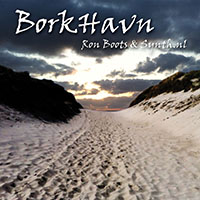Next up was installing all the electrolytic capacitors. You have to pay attention here since their orientation matters. One leg is clearly longer than the other and the long leg is always the + (positive) side. In this picture you can see a little pile of them (green) between my tools. Maybe a nice moment to point out that is is the minimum of tools you would need for such a project: multimeter, cutting pliers, holding pliers, de-solder pump,some screw drivers and a soldering iron.
Here you can see the capacitors already on the PCB. As you can see most of them lay flat, so you need to bend the legs for those, and two are mounted standing up. On this picture also the connectors are already installed: Two midi connectors, two audio jacks, a power connector for the external 9V power supply and a Commodore 64 style power switch. On the front right is also a crystal install. I did solder that too quickly so it is not so neat on the PCB, but it'll work.
The next step is a tricky one. You have to install the big power regulator with two heat sinks. The whole construction has to be put on top of each other with heat pasta in between. That stuff is nasty and stick to everything, so you will have to practice the assembly first without the pasta and when you got the hang of it you do it one more time with the pasta on and try not to get it on your hands, cloths and the rest of the PCB. As you can see I did OK ;)
And then it is time to fit the LCD display on the front panel PCB. For this you have to put the spacers between the PCB's and put the connectors in place. Only like this you can solder them in the right height. The tricky thing though is that you can solder the connectors on the base PCB from the bottom, but you will have to solder the rest from the top, since you can't reach the bottom of that PCB this way. Once everything is soldered you can cut the leads and take the whole construction apart again.
Here you can see the capacitors already on the PCB. As you can see most of them lay flat, so you need to bend the legs for those, and two are mounted standing up. On this picture also the connectors are already installed: Two midi connectors, two audio jacks, a power connector for the external 9V power supply and a Commodore 64 style power switch. On the front right is also a crystal install. I did solder that too quickly so it is not so neat on the PCB, but it'll work.
The next step is a tricky one. You have to install the big power regulator with two heat sinks. The whole construction has to be put on top of each other with heat pasta in between. That stuff is nasty and stick to everything, so you will have to practice the assembly first without the pasta and when you got the hang of it you do it one more time with the pasta on and try not to get it on your hands, cloths and the rest of the PCB. As you can see I did OK ;)
And then it is time to fit the LCD display on the front panel PCB. For this you have to put the spacers between the PCB's and put the connectors in place. Only like this you can solder them in the right height. The tricky thing though is that you can solder the connectors on the base PCB from the bottom, but you will have to solder the rest from the top, since you can't reach the bottom of that PCB this way. Once everything is soldered you can cut the leads and take the whole construction apart again.














No comments:
Post a Comment